Edward Leeds, England
Jahr der Registrierung: 1877
(N. pseudonarcissus x N. poeticus) x N. poeticus
 Princess Mary
Princess MaryWilliam Backhouse, England
Jahr der Registrierung: 1869
N. bicolor x N. pseudonarcissus
John Kendall, England
Jahr der Registrierung: 1899
Maximus x Emperor
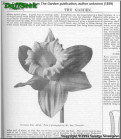
 King Alfred
King AlfredWalter T. Ware, England
Jahr der Registrierung: 1917
Sir Watkin x Blackwell
 Fortune
FortunePercival D. Williams, England
Jahr der Registrierung: 1930
Cornish Fire
Fl. forming a double triangle, 108 mm diameter; perianth segments very broadly ovate, blunt, prominently mucronate, vivid yellow, spreading, a little concave, smooth, with margins minutely incurling at apex, overlapping one-third to a half; the inner segments more narrowly ovate, inflexed at base, reflexed near apex, with margins incurved; corona broad funnel-shaped, lightly ribbed, strong orange, mouth split in places and overlapping, wavy, with rim flanged and crenate.
A description according to Swains of Bristol 1954 catalog: “A sensational first early giant of glorious coloring; an immense flower with broad rich golden perianth and large bold, frilled cup of intense tangerine orange-red, which does not burn in the sun. The flowers are of great substance, short-necked and grandly posed on tall, immensely strong sterns. Freely increasing plant of enormous vigour. One of the great daffodils of future gardens.
Received the Royal Horticultural Society(RHS) Award of Garden Merit(AGM) in 1993 and the award was rescinded by the RHS in 2012.
This story is more about the stock of ‘Armada’. Matthew Zandbergen was a good friend and frequent visitor to Guy Wilson’s home and garden. Zandbergen first saw the seedling in Wilson’s garden in 1938, and tried to buy it from Guy. In 1943, Zandbergen was able to get a letter out to Wilson that he was still alive. Guy decided then that if Matthew lived through the occupation, Guy would present the bulbs to Matthew as a sign of their friendship. Which he did.
 Armada, 2 Y-O, Guy L. Wilson, Nord-Irland, 1938
Armada, 2 Y-O, Guy L. Wilson, Nord-Irland, 1938
Foto #45003 Brenda Lyon, Australien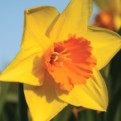 Armada, 2 Y-O, Guy L. Wilson, Nord-Irland, 1938
Armada, 2 Y-O, Guy L. Wilson, Nord-Irland, 1938
Foto #35874 Fentongollan Farms, England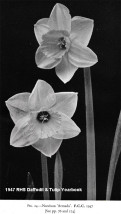 Armada, 2 Y-O, Guy L. Wilson, Nord-Irland, 1938
Armada, 2 Y-O, Guy L. Wilson, Nord-Irland, 1938
Foto #31358 RHS Yearbook, England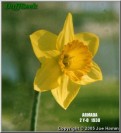 Armada, 2 Y-O, Guy L. Wilson, Nord-Irland, 1938
Armada, 2 Y-O, Guy L. Wilson, Nord-Irland, 1938
Foto #6624 Joe Hamm, Vereinigte Staaten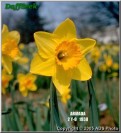 Armada, 2 Y-O, Guy L. Wilson, Nord-Irland, 1938
Armada, 2 Y-O, Guy L. Wilson, Nord-Irland, 1938
Foto #220 ADS Photo, Vereinigte Staaten
![]()
